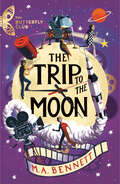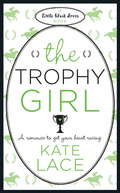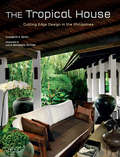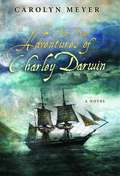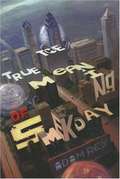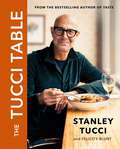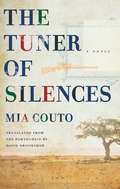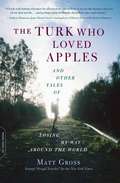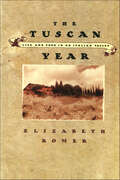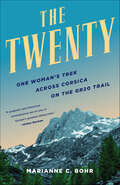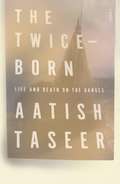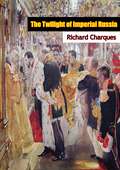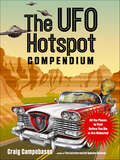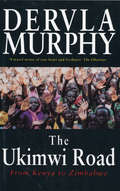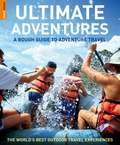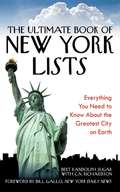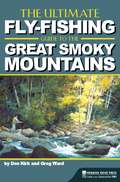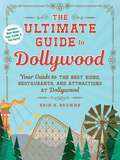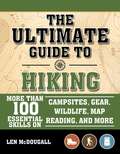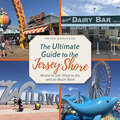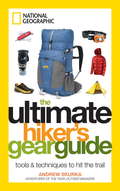- Table View
- List View
The Trip to the Moon: Book 4 - A time-travelling adventure (The Butterfly Club #4)
by M.A. BennettThe adventures of the time-travelling Butterfly Club continue . . .Film is set to become the new craze. Butterfly Club member and filmmaker Georges Méliès pleads to be allowed to go forward in time to harvest a movie camera from the future to make his ambitious film, A Trip to the Moon.The Butterfly Club call up Professor Lorenz's hologram from 1969. The professor reports that all of America is abuzz too, with the most ambitious scientific project in history – an actual trip to the moon. But the mission has stalled in the most terrible way – an accident on the launchpad resulted in the astronauts being trapped in a fatal fire.For the first time ever it is the professor who asks the time thieves for help – he invites them to come to 1969 and stop the dreadful accident, and make sure the trip to the moon can go ahead.
The Trophy Girl
by Kate LaceWhen Lucy Carter lands a job in a stately home she feels that all her dreams have come true. Not only is she in fabulous surroundings deep in the country but she is also working for the Earl of Arden. He was once married to the beautiful Becca Hetherington, a gold-medal-winning three-day eventer, and together they were Britain's golden couple – until Becca was killed in a tragic accident. Now a widower, the Earl is a brooding, romantic figure and there are many women, one in particular, who have their sights set on becoming the next Countess. As Lucy settles into her new job, she finds herself increasingly drawn to the Earl, and she isn't alone; all the staff adore him and are fiercely loyal. But as Lucy glimpses behind the money and glamour, she realises that the Earl's past isn't the fairytale everyone believed...
The Tropical House
by Elizabeth Reyes Luca Invernizzi Tettoni"The Tropical House celebrates a growing trend toward stylish globalization in interior design. More than 25 stunning houses and condos comprise a synthesis of East-West trends and contemporary furnishings--as Filipino designers merge sleek modernist furniture with local designers' "soulful creations" in natural hardwoods and other tropical materials.Over 250 full-color photographs of outstanding Filipino residences will inspire readers with their diverse and contemporary looks. From vintage glamour to classic modern with bold artful accents, to the clean, glam look known as "contemporary chic," this book showcases the myriad tastes of the Philippines.
The Tropical Spa
by Luca Invernizzi Tettoni Sophie BengeThe Tropical Spa catalogs Asia's most luxurious spas with full-color photography and a wide range of stress-busting therapies. The emphasis is on spiritual well-being and natural curatives rather than on modern chemicals and synthetic preparations. Traditional beauty treatments for revitalizing facials; relaxing baths and scrubs; refreshing, healthy tonics and meals; massage oils; blends and techniques; and much more are offered here in an easy-to-follow manner.
The True Adventures of Charley Darwin
by Carolyn MeyerThe fascinating journey of a famous naturalist Young Charley Darwin hated school--he much preferred to be outside studying birds' eggs, feathers, and insects. And so, at the age of twenty-one, he boarded a ship called HMS Beagle and spent five thrilling but dangerous years sailing around the world, studying plant and animal life that was beyond anything he could have imagined. Here, just in time for Darwin's 200th birthday and the 150th anniversary of the publication of his groundbreaking On the Origin of Species, historical novelist Carolyn Meyer tells the story of his unconventional adventures. It's the story of a restless childhood, unrequited teenage love, and a passion for studying nature that was so great, Darwin would sacrifice everything to pursue it.
The True History of The Conquest of New Spain
by Ted Humphrey Bernal Diaz del Castillo Janet BurkeThis rugged new translation--the first entirely new English translation in half a century and the only one based on the most recent critical edition of the Guatemalan MS--allows Diaz to recount, in his own battle-weary and often cynical voice, the achievements, stratagems, and frequent cruelty of Hernando Cortes and his men as they set out to overthrow Moctezuma's Aztec kingdom and establish a Spanish empire in the New World.The concise contextual introduction to this volume traces the origins, history, and methods of the Spanish enterprise in the Americas; it also discusses the nature of the conflict between the Spanish and the Aztecs in Mexico, and compares Diaz's version of events to those of other contemporary chroniclers. Editorial glosses summarize omitted portions, and substantial footnotes explain those terms, names, and cultural references in Diaz's text that may be unfamiliar to modern readers. A chronology of the Conquest is included, as are a guide to major figures, a select bibliography, and three maps.
The True Meaning of Smekday
by Adam RexGratuity Tucci gets a fairly early start behind the wheel. She's 11--and she's good if you want to know. Plus, laws don't matter too much these days, and Tip is desperate to find her mom who was abducted by aliens on Christmas Eve.
The Tucci Table: The unmissable cookbook from the bestselling author of Taste
by Stanley TucciAs seen on BBC2's Stanley Tucci: Searching for Italy Food can bind and govern a family and no one knows this more than Hollywood actor and respected foodie, Stanley Tucci. Throughout his childhood, cooking was a familial venture evoking a wealth of memories and traditions.Featuring family-friendly dishes and stunning photography THE TUCCI TABLE will captivate food lovers' imaginations with recipes from Stanley's traditional Italian roots as well as those of his British wife, Felicity Blunt. Each dish is introduced by Stanley and he offers an insight into why each recipe is so special to his family. Recipes include Pasta Al Forno, Roasted Sea bass, Pan Seared Venison and British classics such as Shepherd's Pie and Sausage Rolls.THE TUCCI TABLE captures the true joys of family cooking.
The Tuner of Silences
by Mia Couto David BrookshawMwanito was eleven when he saw a woman for the first time, and the sight so surprised him he burst into tears. Mwanito has been living in a former big-game park for eight years. The only people he knows are his father, his brother, an uncle, and a servant. He's been told that the rest of the world is dead, that all roads are sad, that they wait for an apology from God. In the place his father calls Jezoosalem, Mwanito has been told that crying and praying are the same thing. Both, it seems, are forbidden.The eighth novel by the internationally bestselling Mia Couto, The Tuner of Silences is the story of Mwanito's struggle to reconstruct a family history that his father is unable to discuss. With the young woman's arrival in Jezoosalem, however, the silence of the past quickly breaks down, and both his father's story and the world are heard once more.The Tuner of Silences has been published to acclaim in more than half a dozen countries. Now in its first English translation, this story of an African boy's quest for the truth endures as a magical, humanizing confrontation between one child and the legacy of war.
The Turk Who Loved Apples: And Other Tales of Losing My Way Around the World
by Matt GrossWhile writing his celebrated Frugal Traveler column for the New York Times, Matt Gross began to feel hemmed in by its focus on what he thought of as "traveling on the cheap at all costs." When his editor offered him the opportunity to do something less structured, the Getting Lost series was born, and Gross began a more immersive form of travel that allowed him to "lose his way all over the globe"--from developing-world megalopolises to venerable European capitals, from American sprawl to Asian archipelagos. And that's what the never-before-published material in The Turk Who Loved Apples is all about: breaking free of the constraints of modern travel and letting the place itself guide you. It's a variety of travel you'll love to experience vicariously through Matt Gross--and maybe even be inspired to try for yourself.
The Tuscan Year: Life and Food in an Italian Valley
by Elizabeth RomerThe Tuscan Year recounts the daily life and food preparation of a family living on a farm in Tuscany. Elizabeth Romer chronicles each season's activities month by month: curing prosciutto and making salame in January, planting and cheesemaking in March, harvesting and threshing corn in July, hunting for wild muchrooms in September, and grape crushing in Ocober. Scattered throughout this lovely calendar are recipes—fresh bread and olive oil, grilled mushrooms, broad beans with ham, trout with fresh tomatoes and basil, chicken grilled with fresh sage and garlic, and apples baked with butter, sugar, and lemon peel, among many others. Alive with the rhythms of country tradition, The Tuscan Year is a treasure for the armchair traveler as well as the cook.
The Twenty: One Woman's Trek Across Corsica on the GR20 Trail
by Marianne C. BohrGreat for fans of: Suzanne Roberts’s Almost Somewhere, Juliana Buhring’s This Road I Ride.Marianne Bohr and her husband, about to turn sixty, are restless for adventure. They decide on an extended, desolate trek across the French island of Corsica—the GR20, Europe’s toughest long-distance footpath—to challenge what it means to grow old. Part travelogue, part buddy story, part memoir, The Twenty is a journey across a rugged island of stunning beauty little known outside Europe. From a chubby, non-athletic child, Bohr grew into a fit, athletic person with an “I’ll show them” attitude. But hiking The Twenty forces her to transform a lifetime of hard-won achievements into acceptance of her body and its limitations. The difficult journey across a remote island provides the crucible for exploring what it means to be an aging woman in a youth-focused culture, a physically fit person whose limitations are getting the best of her, and the partner of a husband who is growing old with her. More than a hiking tale, The Twenty is a moving story infused with humor about hiking, aging, accepting life’s finite journey, and the intimacy of a long-term marriage—set against the breathtaking beauty of Corsica’s rugged countryside.
The Twice-Born: Life and Death on the Ganges
by Aatish TaseerIn The Twice-Born, Aatish Taseer embarks on a journey of self-discovery in an intoxicating, unsettling personal reckoning with modern India, where ancient customs collide with the contemporary politics of revivalism and revengeWhen Aatish Taseer first came to Benares, the spiritual capital of Hinduism, he was eighteen, the Westernized child of an Indian journalist and a Pakistani politician, raised among the intellectual and cultural elite of New Delhi. Nearly two decades later, Taseer leaves his life in Manhattan to go in search of the Brahmins, wanting to understand his own estrangement from India through their ties to tradition.Known as the twice-born—first into the flesh, and again when initiated into their vocation—the Brahmins are a caste devoted to sacred learning. But what Taseer finds in Benares, the holy city of death also known as Varanasi, is a window on an India as internally fractured as his own continent-bridging identity. At every turn, the seductive, homogenizing force of modernity collides with the insistent presence of the past. In a globalized world, to be modern is to renounce India—and yet the tide of nationalism is rising, heralded by cries of “Victory to Mother India!” and an outbreak of anti-Muslim violence.From the narrow streets of the temple town to a Modi rally in Delhi, among the blossoming cotton trees and the bathers and burning corpses of the Ganges, Taseer struggles to reconcile magic with reason, faith in tradition with hope for the future and the brutalities of the caste system, all the while challenging his own myths about himself, his past, and his countries old and new.
The Twilight of Imperial Russia (Galaxy Book; Gb419 Ser.)
by Richard CharquesThe fateful twenty-three years following the accession of the last of the Romanov Tsars formed the prologue to the Russian Revolution, and foreshadowed the motives and mental attitudes of Russian policy today. Richard Charques's detailed, vivid, and objective account of the reign of Nicholas II is based upon a wide study of Russian and other sources. It is given particular force and liveliness by the portrait gallery of the leading figures of the period; Nicholas II, the Tsaritsa Alexandra, Constantine Pobedonostsev, Sergius Witte, Lenin, Trotsky, Premier Stolypin, Miluikov, and Rasputin."Striking phrases, fine judgments, flashes of deep perception, flicker through these pages, illuminating the sad, sombre story, which Mr. Charques is not afraid to extend, by implication, into the present."--Observer (London)"Informative and well written, and the story of the last phase of the Romanovs is...movingly told."--New Statesman (London)"Mr. Charques writes with great lucidity and elegance; he has also unusual discernment, a healthy sense of historical reality, and a penetrating mind...Scrupulously fair."--Times Educational Supplement (London)"An uncommonly good book about the decline and fall of the Russian empire--lucid, incisive, well balanced, and extremely well written."--Chicago Sunday Tribune
The UFO Hotspot Compendium: All the Places to Visit Before You Die or Are Abducted
by Craig CampobassoThe definitive UFO hunter's bucket list of legendary and active UFO and alien hotspots in North America The UFO Hotspot Compendium will take you on your own behind-the-scenes trip to some of the most visited UFO hotspots—areas where aliens and cryptids are spotted, forbidden scary locations, as well as terrifying places only the brave dare to visit. Based on first-hand information gleaned from MUFON's trained investigators and researchers, interviews with people who have had extraordinary UFO experiences, and the author's travel to many of the locations, this book is a guided tour of thirty-five of the most remarkable UFO-related sites: the when, where, backstory, investigations, and things to do when visiting the site. Included are MUFON's top twenty-five places known for the most UFO sightings, legendary spots known for UFO activity, alien kitsch sites, locations that have the added benefit of sacred retreats, and places you might not want to visit but should know about. From the Skinwalker Ranch to Area 51 to Joshua Tree, The UFO Hotspot Compendium will be a hit with true believers, the mildly curious, and those intrigued by all things off-planet. Experience the wonder and terror of alien abduction, a spaceship crash, or a UFO sighting from the safety of your own home.
The Ukimwi Road: From Kenya to Zimbabwe
by Dervla MurphyThe Ukimwi Road is the riveting account of renowned traveler Dervla Murphy's most intrepid journey yet - 3,000 miles by bicycle through the heart of sub-Saharan Africa, a region that has recently drawn the world's attention as an epicenter of the AIDS epidemic (ukimwi is Swahili for AIDS). Along her route - from Kenya through Uganda, Tanzania, Malawi and Zambia to Zimbabwe - Dervla Murphy observed the harrowing problems of the people among whom she traveled. She witnessed the devastating effects of AIDS, drought and economic collapse on the land, as well as the skepticism of Africans about Western "development projects" and "aid schemes" which promise so much but deliver so little. She also discovered a wide range of reactions to AIDS, which has reached epidemic proportions in Africa, and which poses a new and mysterious threat to traditional family life
The Ukimwi Road: From Kenya to Zimbabwe
by Dervla MurphyThree thousand miles by bicycle through Africa. In January 1992, Dervla Murphy prescribed herself several carefree months and embarked on a cycle tour (pedaling and pushing) from Kenya to Zimbabwe via Uganda, Tanzania, Malawi and Zambia on the cyclist’s equivalent of a Rolls Royce called Lear. Before long, she realized that for travelers who wish to remain stress-free, Africa is the wrong continent. Inevitably she was caught up in the harrowing problems of the peoples she met; the devastating effects of AIDS (ukimwi is Swahili for AIDS), drought and economic collapse; skepticism about Western “aid schemes”; and corruption and incompetence, both white and black.
The Ukimwi Road: From Kenya to Zimbabwe
by Dervla MurphyThree thousand miles by bicycle through Africa. In January 1992, Dervla Murphy prescribed herself several carefree months and embarked on a cycle tour (pedaling and pushing) from Kenya to Zimbabwe via Uganda, Tanzania, Malawi and Zambia on the cyclist's equivalent of a Rolls Royce called Lear. Before long, she realized that for travelers who wish to remain stress-free, Africa is the wrong continent. Inevitably she was caught up in the harrowing problems of the peoples she met; the devastating effects of AIDS (ukimwi is Swahili for AIDS), drought and economic collapse; skepticism about Western "aid schemes"; and corruption and incompetence, both white and black.
The Ultimate Adventures: A Rough Guide to Adventure Travel
by Greg WittUltimate Adventures: A Rough Guide to Adventure Travel features 30 different adventure sections. There are adventures for all travellers, including "soft" experiences for those testing their bravery levels and extreme adventures for adrenalin junkies, each rated by physical, psychological, skill and wow factor! Whether your appetite for adrenalin takes you to arctic freezes, ocean depths or sweltering deserts, this book will tell you the how, why and when to plan your ultimate adventure. Written by trekker extraordinaire Gregg Witt, who brings cultural sensitivity and humour, as well as concise practical information. The guide is packed with maps and safety advice and includes information on all the best local guides. Make the most of your time on Earth with this spectacular foray into world adventures.
The Ultimate Book of New York Lists: Everything You Need to Know About the Greatest City on Earth
by Bert Randolph Sugar C. N. RichardsonWhere can you find New York City's best hamburger? What are the ten best songs ever written about New York? The ten best books set in New York? Bert Randolph Sugar and some famous friends answer these burning questions, helping both New Yorkers and tourists learn what makes the greatest city on earth so great. With a foreword by legendary newspaperman Bill Gallo of the New York Daily News and lists from celebrity New Yorkers like Pete Hamill and Howard Stern, this is a book no lover of New York City should be without.
The Ultimate Fly-Fishing Guide to the Smoky Mountains
by Greg Ward Don KirkThe Ultimate Fly-Fishing Guide to the Smoky Mountains does more than any other book in print to bring success to a fishing trip. This newly updated landmark volume is an essential guide for anyone planning to fish the rivers, streams, and lakes in the Smokies - these fisheries are some of the greatest in the nation. For successful fly-fishing, this guide is as important as the right tackle.The first half of this guide offers advice and history. The second half examines each of the 13 watersheds found within the park. Don Kirk and Greg Ward provide information about trail access, fishing pressure and quality, species, fly hatch information, and campsite availability.
The Ultimate Guide to Dollywood: Your Guide to the Best Rides, Restaurants, and Attractions at Dollywood (Unofficial Dollywood)
by Erin BrowneA must-have for Dolly Parton fans everywhere, this unofficial guide features 100 of the must-try restaurants, iconic rides and attractions, and important landmarks at Dollywood and its sister parks.Dollywood is a unique and incredible theme park that&’s best known for its amusement park thrills, traditional Smoky Mountain inspiration, and, of course, insight into namesake and owner Dolly Parton. There&’s a lot to see and do—and it can be easy to miss out on all Dollywood and its nearby sister parks have to offer. The Ultimate Guide to Dollywood is your one-stop shop for all things Dollywood! You&’ll get insider advice on everything from the food to the rides and learn all the best tips and tricks to make the most of your visit. -Want to try the world&’s fastest roller coaster? The Lightning Rod is not only the fastest…it&’s also the first wood launch coaster. -Looking for an attraction that will really excite the biggest Dolly Parton fans? Check out Dolly&’s $750,000 tour bus that was her &“home&” for fifteen years of touring, parked right in the Adventures in Imagination section of Dollywood. -Are you a history buff? The Dollywood Express, which takes visitors on a five-mile ride through the Great Smoky Mountains, actually played a key role in America&’s war effort during World War II. -Searching for the inside scoop on all things Dollywood? Check out Red&’s Drive-In, where you&’ll be able to impress fellow visitors with the fun fact that this restaurant was named after Red&’s Café, where six-year-old Dolly ate her first hamburger. Whether you&’re a longtime Dolly Parton fan looking to learn something new about the iconic musician or planning to make the most of your first trip to Dollywood, this book is the perfect companion.
The Ultimate Guide to Hiking: More Than 100 Essential Skills on Campsites, Gear, Wildlife, Map Reading, and More
by Len McDougallIn The Ultimate Guide to Hiking, readers interested in the outdoors are provided with time-tested advice on hiking and backpacking in the wilderness. Some practical tips include: How to choose the best gearHow to set up a campsiteHow to interact safely with wildlifeHow to properly read a mapHow to forecast the weatherLearning practical navigation skillsAnd so much more!
The Ultimate Guide to the Jersey Shore: Where to Eat, What to Do, and so Much More
by Peter GenoveseThe Jersey Shore, our most treasured asset, the envy of forty-nine other states, comes alive in this new book by the reporter and writer who knows New Jersey—and the Jersey Shore—best. Every conceivable topic—where to eat, where to stay, landmarks and attractions, what to do with the kids—is covered with the kind of inside information you just won’t find on tourism web sites or Facebook. All one hundred-plus Shore towns are included, from Sandy Hook to Cape May. There are hundreds of restaurant listings and recommendations. The book also contains engaging profiles and vignettes of the people and places that give the Shore its special character and charm. A throwback five-and-dime store on Long Beach Island. Banner pilots. Birders. Baby parades. And more. You want lists and rankings? The book is full of them—twenty best Shore towns, twenty-one secret spots down the Shore, twenty essential Jersey Shore experiences, fifty things we bet you didn’t know about the Shore, and so on. The book is the next best thing to being at the Shore; actually, it may be better than being there (think of those epic traffic jams on the Parkway, and all the money you’ll save on tolls, beach fees, and bad boardwalk pizza).
The Ultimate Hiker's Gear Guide: Tools and Techniques to Hit the Trail
by Andrew SkurkaWhether you're a first-time backpacker, an occasional weekend warrior or a seasoned long-distance trekker, you'll love this guide. Learn exactly what you need to carry - both on your back and between your ears - for all seasons and circumstances
